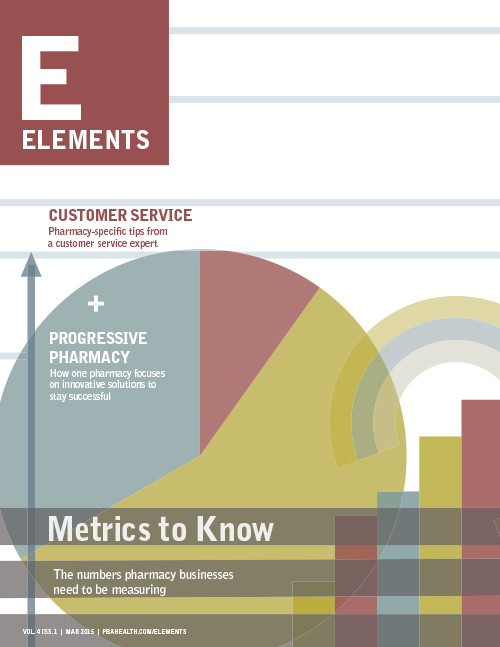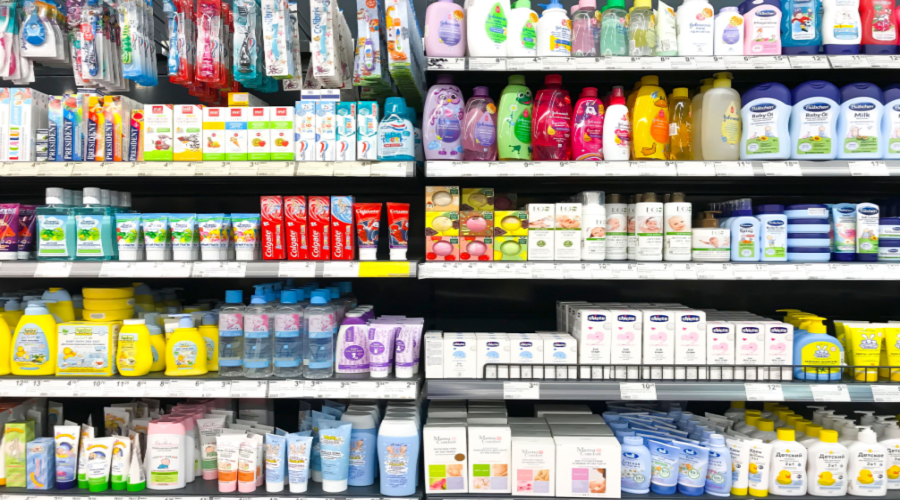Inside: Pricing your retail products is more art than science. These guidelines will get you the best balance of profit and sales.
A price is more than just a number on a sticker. How you price your products can determine how much your patients will buy and what kind of revenue your pharmacy will have.
But choosing prices for the merchandise in your front end can often feel like an arbitrary endeavor with lots of questions attached. If the price is too high, will people leave the product on the shelf? If it’s too low, will you end up losing money?
Having a pricing strategy can take the mystery out of the process. Here’s what you need to think about when deciding what prices to set for your products.
What to Consider When Setting Prices
Before you decide on how to price your products, you need to think critically about the needs of your business and your patients. These aspects of your independent pharmacy will help you determine what track to take.
Costs
There’s a lot more to consider than just the wholesale cost of your products when setting a price. You also have to consider the total cost of running your business, which breaks down into fixed costs and variable costs.
Fixed costs include things that don’t change like your rent or your liability insurance.
Variable costs change based on your output. These include the cost of labor, additional supplies, credit card fees, and more.
Once you’ve determined your total costs, performing a break-even analysis can give insight into what your pricing strategy should be. That analysis relies on the equation:
Total Revenue = Total Variable Costs + Total Fixed Costs
This will help you see how much volume you need to sell to cover the costs of your operation before you see any profit.
Demographics
To price your products successfully, you have to know your customers. How much they make, what their budgets are, and how sensitive they are to prices changing.
Of course, you won’t be able to pinpoint one idealized patient that is representative of everyone who shops at your pharmacy.
Not everyone will be able to afford every item at your pharmacy, so it could be useful to segment your patients into a few groups: those who are budget conscious, those who can afford a little more, and higher-income patients.
Competition
Because comparison shopping has become so easy since the advent of the internet, you need to know what your competitors are charging for the same or similar products. Even if you don’t know, your patients will.
You don’t need to go head-to-head with retail giants—they will always be able to slash their prices lower—but you do have to be realistic about whether the quality of your products and services can justify a higher price.
A Pricing Method for Every Occasion
There are many different pricing methods, and one size does not necessarily fit all. The strategy your competitor uses to price their products might not be the one you should use. In fact, you may end up using a different strategy in different parts of your store. These are some of the most common pricing strategies used by retailers.
Keystoning
Keystone pricing is when you double the wholesale price to determine the retail price, giving you a 50 percent gross margin. This pricing method was common before computers were around to help retailers do complex math, but margins today often have to be lower than 50 percent to stay competitive.
Price Skimming
When introducing a new product or service, price skimmers will charge the highest price they think their customers will pay. Over time, retailers will lower the price to attract customers on a lower budget and to stay competitive in the marketplace. The initial high price makes the product or service appear high quality to consumers.
Penetration Pricing
Penetration pricing is the opposite of price skimming. It’s when a product is introduced at a low price to attract buyers away from competitors. Then, when a customer base has been established, the price is raised. Retailers using this strategy hope customers will stick with them even when the price gets higher, but they run the risk of losing out to a competitor with a lower price.
Cost-Plus Pricing
Using the cost-plus method of pricing, retailers decide how much profit they want to make on a given product, then add that to the cost of producing to determine the sale price. The downside of this method is that it fails to consider the demand for a product and the competition in the marketplace, meaning your patients might not be willing to pay the price you set and go somewhere more affordable.
Value-Based Pricing
On the other side of cost-plus pricing is value-based pricing. It operates on the principle that customers don’t necessarily care how much an item costs, but how much value it will provide them. Retailers who use value-based pricing figure out what that value is and set the price there. They must have excellent products and services to convince customers they are worth the value.
Psychological Pricing
With psychological pricing, retailers set prices so they aren’t round numbers—$19.99 instead of $20, for example—because they believe customers will only assess the first digits of the price and think they are getting a good deal. Most retailers use a version of this pricing method.
Be Open to Change
You might not price your products right the first go around. Certain items might be priced too high while others are too low. That’s why you need to constantly monitor your prices and experiment to ensure that everything in your front-end is priced correctly.
While it can be difficult to raise prices, it’s sometimes necessary. The key is to do it gradually. You don’t want your regular patients to come in and find that something that was $10 last week is now $20. That might scare patients away to a competitor.
On the other end of the spectrum, lowering prices will probably be welcomed by your patients. Even so, you still need a strategy to keep your profit sustainable. Use your demographic information and offer targeted discounts to encourage people to buy without lowering your prices across the board.
 These Are the Most Important Pharmacy Metrics to Measure
These Are the Most Important Pharmacy Metrics to Measure
This white paper includes 30+ formulas to calculate the most important metrics for independent pharmacies. You’ll learn to think like a retailer, discover the methods to track and measure meaningful pharmacy metrics, and learn ways to use pharmacy metrics to get insight into business performance.
A Member-Owned Company Serving Independent Pharmacies
PBA Health is dedicated to helping independent pharmacies reach their full potential on the buy-side of their business. Founded and owned by pharmacists, PBA Health serves independent pharmacies with group purchasing services, wholesaler contract negotiations, proprietary purchasing tools, and more.
An HDA member, PBA Health operates its own NABP-accredited secondary wholesaler with more than 6,000 SKUs, including brands, generics, narcotics CII-CV, cold-storage products, and over-the-counter (OTC) products — offering the lowest prices in the secondary market.













